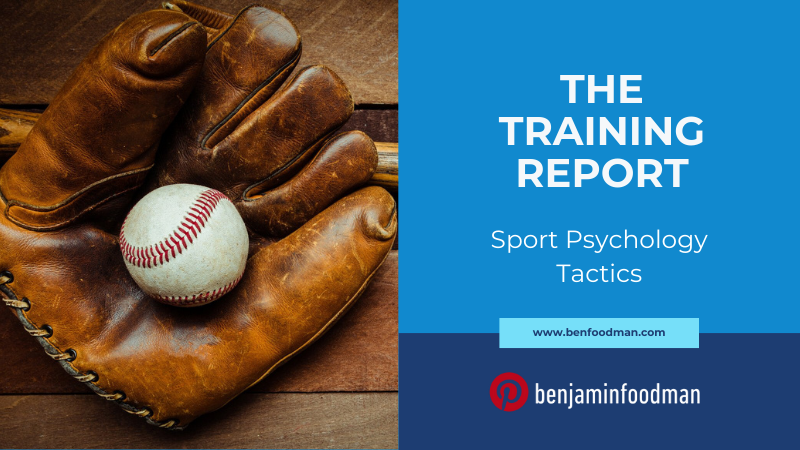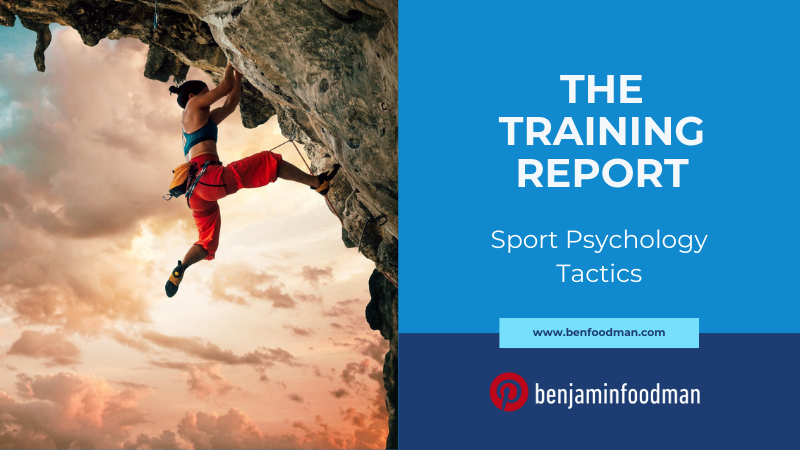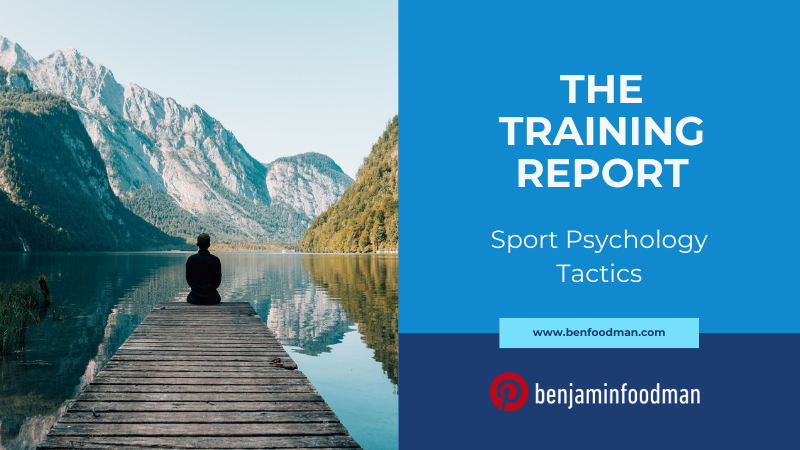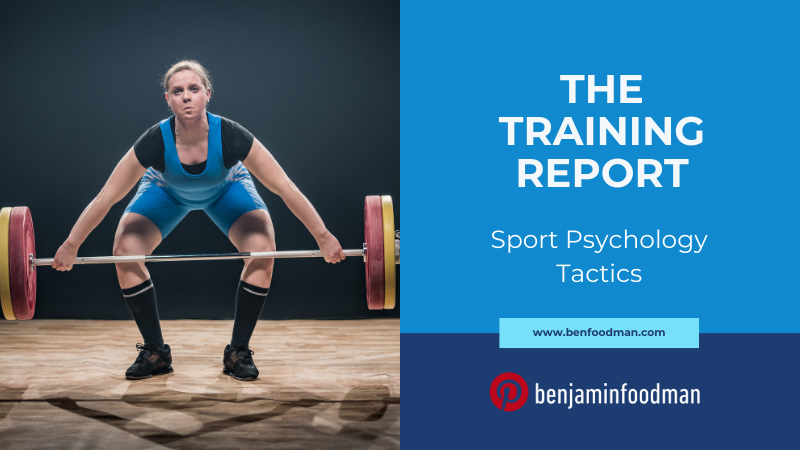How Can Golfers Cure The Yips?
Golfers should work with sport psychologists or Certified Mental Performance Consultants (CMPC) that are trained in either Brainspotting or EMDR (Eye Movement Desensitization Reprocessing). These are trauma-informed interventions directly interface with the regions of the brain that are responsible for the creation of the Yips symptoms, which allow athletes to directly address the true underlying issue causing the Yips.
Last updated 10/19/25, written by Benjamin Foodman, CMPC, LCSW, CSCS
About The Author
Ben Foodman is a licensed psychotherapist & Certified Mental Performance Consultant (CMPC) through the Association for Applied Sport Psychology (AASP). He owns his private practice located in Charlotte North Carolina where he specializes in working with athletes to help them overcome mental blocks (the yips), increase mental toughness and improve focus using techniques such as Brainspotting, biofeedback, exercise science and sport psychology. If you are interested in services, use the link here! Enjoy the article below!
Introduction: Understanding How The Experts Cure The Golf Yips
The Yips is one of the most talked about mental blocks in sports, but it is also the least understood. Some of the reasons for this range from how there is incredible stigma around having the Yips, to researchers and sport psychologists not understanding the true underlying mechanisms that cause this issue. As such, people will provide different ‘management’ techniques ranging from changing the golfer’s grip on the club, to doing anxiety management work before a golfer steps foot out onto the course. While there are some management techniques that are excellent temporary remedies, they are often discussed as long-term solutions.
Because this is such a hotly debated topic, I wanted to use this issue of the Training Report to review the golf Yips. For part one I want to discuss what the yips are by exploring the symptoms and the underlying cause. For part two, I want to review the in-depth neuroscience of the Yips that helps us understand what exactly is happening in the athlete’s brain as they are experiencing this issue. Finally in part three I want to review one management strategy that athletes can use to help tolerate the Yips while they use another mental training strategy to ultimately ‘cure’ themselves of the golf Yips. Let’s go ahead and dive into part one!
Part I. What Are The Golf Yips?
In my experience working with golf athletes, there are common symptoms that they will describe when they are ‘yipping’. Some of these symptoms include but are not limited to the following:
involuntary spasms of the hand
excessive muscle tension in very specific areas of the body
very intense temperature change felt in certain areas of the body
temperature changes that come in ‘waves’ such as increase of heat in the head or even the elbows
hyper focusing on a very small area of the ball
quick and unexpected muscle spasm in random parts of the body during golf swings, etc.
Unfortunately, most sport psychologists and even neuroscientists are so far away in their understanding of what this problem actually is. Most of these professionals spend their time focusing on the symptoms I previously mentioned by providing ‘coping’ strategies that just help athletes ‘manage’ these symptoms. The truth is that these professionals should not be focusing on the symptoms, but rather using the information of the symptoms to try and understand what the true, underlying issue is that is creating these symptoms. The best way to understand that is by exploring the neuroscience of trauma, and expanding our knowledge of how trauma creates these issues.
Trauma is ultimately the culprit behind the yips. More specifically, it is trauma that has not yet been processed which causes these issues. Like all humans, athletes go through a variety of experiences both inside and outside of golf that can have a severely negative impact on their psychological well-being. Consider all of the potential stressors that one can experience training and competing in golf:
sports humiliations
training and performance-related injuries
not achieving performance metrics that satisfy sponsors
not achieving performance metrics that satisfy college golf coaches
verbal abuse from coaches
high levels of athlete identity, etc.
Then we have to also consider the ‘out of golf’ experiences that golf athletes can have:
car accidents
interpersonal relationship issues
health concerns that require surgery
loss of a family member or loved one, etc.
It’s not to say that everyone who experiences one or several of the previously mentioned examples will be traumatized, but rather it’s that we don’t know who will be affected by these issues and to what extent they will be impacted. What we know for sure is that all of the previously mentioned examples are possible catalysts for the storage of unprocessed trauma, and unprocessed trauma can lead to the golf Yips. Let’s explore on a deeper level what this looks like from a neurological perspective.
Part II. Why Do Experts Explain That It’s All In Your Head?
Sometimes golfers and athletes in other sports will hear coaches and even some sport psychologists say ‘it’s all in your head’. The underlying implication is that what you are thinking and feeling from a Yips perspective is not ‘reality-based’ and this is just a part of your imagination. These coaches are actually right about the Yips being ‘in your head’, but they are right for the wrong reasons…which is vitally important to understand. So what exactly is happening in a golfer’s head that generates the Yips? In the book The Body Keeps The Score, Dr. Bessel Van Der Kolk goes even deeper explaining how the mechanisms of the brain respond to stress, which in turn create the symptoms of the Yips:
The emotional brain has first dibs on interpreting incoming information. Sensory information about the environment and body state received by the eyes, ears, touch, kinesthetic sense, etc. converges on the thalamus where it is processed and then passed on to the amygdala to interpret its emotional significance.
This occurs with lightning speed. If a threat is detected, the amygdala sends messages to the hypothalamus to secrete stress hormones to defend against that threat. The neuroscientist Joseph LeDoux calls this the low road.
The second neural pathway, the high road, runs from the thalamus via the hippocampus and anterior cingulate, to the prefrontal cortex, the rational brain, for a conscious and much more refined interpretation.
This takes several microseconds longer. If the interpretation of threat by the amygdala is too intense, and/or the filtering system from the higher areas of the brain are too weak, as often happens in PTSD, people lose control over automatic emergency response, like prolonged startle or aggressive outbursts.
While Dr. Van Der Kolk’s book provides an excellent description of the neuroscience behind the Yips, we need a deeper understanding of what this looks like in a sport context. In the book This Is Your Brain On Sports by David Grand, the author goes into detail explaining what happens in the brain that causes the Yips. Per the author
‘In parallel fashion, the brain attempts to always move toward a state of psychological equilibrium. Over the course of our lives, we are exposed to a variety of life experiences, some positive, some neutral, and some negative.
Through a natural assimilation process, the brain adaptively processes these experiences, so they are constructively integrated. What is useful from the experience is learned and stored in the brain with the appropriate emotion and is available for future use.
When an experience is successfully assimilated or digested it is stored in the brain with little attached intense emotion or physical sensation. When we recall such an incident, we don’t reexperience the old emotion or sensation with it.
In this way we are informed by our past experiences and memories but not controlled by them and with sports our present athletic performances are not burdened by emotional or physical baggage from the past, only learned experience.
By contrast, trauma or any strongly negatively charged experience isn’t adequately assimilated or processed. Instead, the upsetting incident remains stuck in the system in broken pieces’.
‘The body instantly memorizes the physical experience of the trauma in exquisite detail, including the body sensations of the impact and pain, along with the associated sights, sounds, smells and tastes.
The attached emotions and where they are felt in the body are frozen as well. The brain is overwhelmed and instead of getting digested, all of the information attached to the injury, including the negative thoughts is stored in the brain in exactly the same form it was initially experienced.
Days, week, months or even years later when the athlete is in a situation reminiscent of the original trauma or experiences prolonged stress, the upsetting experience may be unconsciously activated, thus interfering with the performance of the moment.
These components represent all of the sensory details from the earlier event that were frozen in the brain and body in their original disturbing state: the images, lighting, emotions, physical movements, sounds, or smells.
The unique sensory details later returning to consciousness cause the performance disrupting symptoms so common in mental blocks.’
So now that we have a better grasp about what is happening in our brain when we are dealing with the golf Yips, what are some strategies we can use to overcome this?
FAQ
-
There is no way to definitively answer this question because of qualia (the subjective experience of an individual’s emotions). That being said, golfers will describe feeling increased heart rate, rapid breathing, temperature changes throughout the body and/or head, random pain or spasms in certain areas of their body, etc.
-
This is not true. Mental toughness has nothing to do with this issue. The yips is a stress response that is usually the end result of unprocessed trauma.
-
You cannot get rid of the Yips permanently because it is an involuntary stress response. That said, if the athlete and sport psychologist/CMPC have selected the correct issue to work on (e.g. unprocessed trauma), the Yips symptoms will simply disappear, and it is very unlikely that they will reappear again.
Part III. How Do Athletes Cure The Yips In Golf?
There are two forms of mental training that can help golfers cure the Yips: Quiet Eye & Brainspotting. Quiet eye is more of a ‘management’ strategy while Brainspotting helps deal with the underlying issue. Essentially, quiet eye helps you manage the issue while you are truly dealing with the problem through a Brainspotting approach. Let’s first explore what quiet eye is. In the book Motor Learning And Performance by Richard Schmidt and Craig Wrisberg, the authors provide an excerpt that helps explain the importance of focal vision and the quiet eye phenomenon. The authors state the following: An important challenge for scientists is determining how performers use vision to control their movements. Research by Vickers (1996) suggests that an important difference in the visual control of expert and nonexpert performers is a pre-execution period of visual fixation Vickers called the ‘quiet eye’. The four characteristics of quiet eye are a directing of attention to a critical location or target in the performance environment, an onset that occurs prior to the intended movement, a duration that is longer for elite performers than for those of lesser skill levels, and of course a high level of stability. Recent research examining the quiet eye phenomenon has substantiated Vickers’ predictions and shown that preperformance visual fixations are fewer and longer but cease earlier (as the movement is being executed) for highly skilled than for lesser skilled performers in closed skills such as basketball shooting, billiards, and small-bore rifle shooting, as well as in open skills such as goaltending in ice hockey.
The authors continue: In the study by Janelle and colleagues (2000), participants attempted 40 rounds of target shooting on a simulator. In addition to recording shot accuracy and duration of aiming, the researchers obtained eye-movement and brain-wave data that allowed them to estimate visual gaze behavior of the shooters. Performance accuracy was significantly higher and the visual fixation period preceding shot execution longer for experts than for non-experts. Brain wave results also indicated superior engagement of visuospatial resources by experts compared with nonexperts. The results of all these studies suggest that superior performance in some close and open skill situations is attributable in part to the performer’s capability of achieving a fixation of the eye (i.e. quiet eye) prior to movement execution. Again, while this approach is helpful for managing the Yips, it should not be used as a replacement for Brainspotting. Brainspotting will offer golfers the best long-term solution for this issue. But what exactly is Brainspotting?
Brainspotting is a brain-based psychotherapy technique that utilizes the client’s field of vision to identify unresolved psychological issues. In Brainspotting we say ‘where you look affects how you feel’ and through this process clients have the ability to access the parts of their brain that traditional psychotherapy approaches such as cognitive behavioral therapy are unable to do. This results in clients being able to directly address the true ‘underlying’ issue (which we refer to as a Brain Spot) that has created conflict allowing individuals to move from needing to constantly cope, to not needing to cope at all. Brainspotting can be used to help anyone who is dealing with mental blocks, the yips, psychologically traumatic events, chronic pain issues from injuries, as well as individuals who are trying to access deeper levels of creativity or cultivating mental flow states. When we think about the potential issues that golfers deal with that are connected to the Yips (sport humiliations, sports-injuries, out of sport trauma such as car accidents, interpersonal relationship issues), it can be easy to see why this intervention pair perfectly with this athlete population.
The goal of all psychotherapy interventions are to help clients move from dysregulation to regulation. For instance, for golfers that have been experiencing mental blocks such as increased pre-performance anxiety or fear responses, this can be considered a state of dysregulation.
Because almost half of the brain is dedicated to vision, we use the client’s field of vision combined with focused mindfulness to help engage the regions of the brain that are responsible for regulation and bypass the regions that are not!
This physiological approach can help clients achieve their desired psychological outcomes. When athletes work with a sport psychologist who uses Brainspotting, they will first identify what the issue is that they would like to resolve.
These issues can range from experiencing pre-performance nerves in sports, to having anxiety about speaking in front of a team. Clients discuss the issue in-depth and then the sport psychologist invites clients to have their eyes follow a pointer that the clinician will move in certain directions to identify the eye position that is relevant to the topic that the client is looking to resolve. Once the eye position is identified, the client will hold that eye position for either several minutes up to two hours potentially until the issue is resolved. Whether golfers like it or not, the Yips is an inevitable part of sports. In the same way athletes need to condition themselves to deal with predictable features of sport performance (e.g. working with a strength coach to increase power), Brainspotting is a form of mental training that will help you either avoid or work through the Yips!
Note To Reader:
If you are an athlete reading this segment of the TRAINING REPORT, hopefully this content was helpful! I put the Training Report together because I felt like many of the discussions on issues such as the Yips/mental blocks, strength training & other subject matter on athlete performance concepts were really missing the mark on these ideas (e.g. how trauma is the direct cause of the Yips). If you are interested in learning more, make sure to subscribe below for when I put out new content on issues related to sport psychology & athlete performance! Also, if you are looking to work with a mental performance specialist, you are in the right place! USE THIS LINK to reach out to me to see if my services are the right fit for your goals!
ARE YOU ON THE LIST?
Make sure you’re signed up to Ben’s mailing list to receive news & updates on new strategies in sport psychology, upcoming workshops & products. Don’t wait, sign up now!





















































































